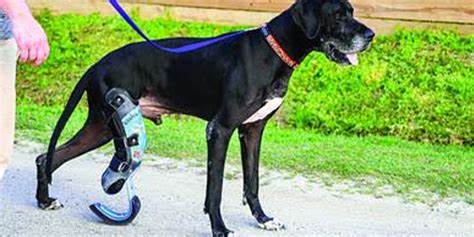Prosthetic limb for veterinary practice in animal welfare
Prof (Dr) Md Moin Ansari
University Professor & Head
Department of Veterinary Surgery & Radiology
Bihar Veterinary College, Patna-14
________________________________________
In humans, an artificial limb can be rehabilitating physically, mentally, psychologically and emotionally for their well being. Around 400 years after the wheelchair was invented for humans, veterinary practitioners began considering wheels as a viable aid for pet animals. Mobility issues are not just a human concern, moreover, animals experience similar affects. Veterinary prosthetics are a relatively new phenomenon, and their technology is now improving at a rapid pace they reveal the power of compassion and technology to renew the spirit of disabled animals. A veterinary prosthesis is a medical device that takes the place of an absent body part for an animal which can make walking difficult for a variety of animals These devices are created with the intention of mimicking the body part to serve the same purpose and functionality. Veterinary prosthetics are largely classified based on where they are required. This also determines suitability for prostheses, with partial or full limb disability due to severe accidental injury, neoplasia with irreversible neurologic compromise, ischemic necrosis, uncontrollable orthopedic infections, hind quarter weakness, paresis, paralysis, unmanageable arthritis, congenital deformity, and in most cases osteosarcoma. Therefor, there is an emerging interest in limb prosthesis design and its clinical application since they offer an alternative to sacrificing the animal in extreme situations where amputating the limb of precious animal life is the only option. Such prosthetic limb may be beneficial to correct problems that limit the comfort, longevity of an animal and promoting the welfare concern.
Modern veterinary medicine now includes not only sophisticated procedures such as joint replacements, stereotactic radiation, chemotherapy, and advanced orthopaedics but also the application of biomechanics and modern technologies when treating limb loss and/or loss of limb function. Now it is need of hour to think about modern surgical approaches, design and manufacturing methods, and bio-mechanical analyses so that animal doctors can make more and better know how on the development and selection of proper limb prosthesis before its use. In recent years, veterinary prosthetics have gained significant attention for their role in the rehabilitation of animals, whereas pets enjoy the security of human guardianship, domestic animals find safety in the freedom of nature. In restoring the overall health status of animals, prosthetics are a last resort, and the outlook for survival following attachment of a prosthetic device often regarded as essential rehabilitative procedure. Procedures such as as 3-D printing, is an effective and useful method for prosthetic limb in rehabilitation. One advantage to using 3-D printing manufacturing is that it is an efficient way to construct a device with a reasonable high-level of detail, especially if the device needs to be of small size. One example of this is the case of a chicken with a sprained ankle joint and use this process to construct an ankle-foot orthosis for the chicken. Another advantage of additive manufacturing is the ability to use software to create an electronic model of the device thus allowing the device to be created quickly and thus saving precious time.
Veterinary prosthetic interventions are to be performed on a wide variety of animal species and may be used to facilitate rehabilitation and healing of a variety of
pathological and surgical conditions. There are numerous examples of animals that have been fit with a variety of prostheses devices in the literature, from orthotics for canines with torn cranial cruciate ligaments or for chickens with sprains to prostheses in horses with an amputated limb and prosthetic beaks in species, as well as a variety of other devices that were designed, constructed and fit for to adapt well to a complete disarticulation of an entire limb, this produces additional wear and can lead to premature deterioration of compensatory structures. The knowledge of the anatomy and biomechanics of the animal for which the device is being built is crucial for the success of prosthetic devices.
Conclusion:
Prosthetics limb may help to improve quality of life and live with dignity. However, it should be considered as an alternative to euthanasia where full amputation and reduce the risk of outright rejection.
Reference:
Mich, P.M. (2014) The emerging role of veterinary orthotics and prosthetics (V-OP) in small animal rehabilitation and pain management. Top. Companion Anim. Med., 29(1): 10-19. 25.
Mich, P.M., Dacvsmr, C., Kaufmann, M.C.P. (2018) Veterinary orthotics and prosthetics. In: Canine Sports Medicine and Rehabilitation. John Wiley & Sons, Inc., United States. p265.
Le Moyne, R. (2016) Advances for Prosthetic Technology. Springer, Tokyo, Japan.
Wojnarowska, W. M., Najowicz, J., Piecuch, T., Sochacki, M., Pijanka, D., Trybulec, J., & Miechowicz, S. (2021). Animal orthosis fabrication with additive manufacturing – A case study of custom orthosis for chicken. Rapid Prototyping Journal, ahead-of-print(aheadof-print). https://doi.org/10.1108/rpj-03-2021-0054


